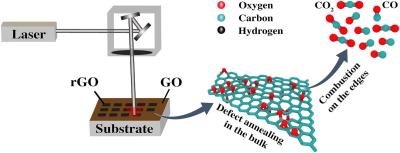The Graphene-Info weekly newsletter
Published: Tue, 03/29/22
The Graphene-Info newsletter (March 29, 2022)
Cannot read this? View it online here
INBRAIN Neuroelectronics signs an agreement to develop neurotechnology patented by six public research institutions
INBRAIN Neuroelectronics has signed an agreement for the exploitation and development of three patents and a trade secret, mainly held by the Institute of Microelectronics of Barcelona (IMB-CNM) of the Spanish Council for Scientific Research (CSIC), the Catalan Institute of Nanoscience and Nanotechnology (ICN2), the Institució Catalana de Recerca i Estudis Avançats (ICREA) and the Biomedical Research Centre Network CIBER BBN. The Universitat Autónoma de Barcelona (UAB) and the Institut de Investigacions Biomèdiques August Pi i Sunyer (IDIBAPS) are also co-owners of the patents. This is a successful process of technology transfer in a public-private collaboration with multiple research institutions.
The company will carry out the development and manufacturing of these technologies within the Institut Català de Nanociència i Nanotecnologia (ICN2) and the Micro and Nanofabrication Clean Room of the Institute of Microelectronics of Barcelona (IMB-CNM) of the CSIC.
AMD announces further contract extension with U.S Army
In December 2020, Advanced Material Development (AMD) announced that it secured its first contract under the Defense Science and Technology Laboratory (DSTL) Weapons Sector Research Framework (WSRF), worth £125,000 (around USD$166,700). Since then, AMD received a further award for its ongoing collaborative camouflage work with the United States Army.
Now, AMD announced that it has received further funding from the Office of the Secretary of Defense for its proprietary ChamEM signature management program collaboration with the US Army.
Researchers shed light on the behavior of graphene oxide at extreme temperatures
Researchers from Moscow Institute of Physics and Technology, Joint Institute for High Temperatures of the Russian Academy of Sciences, Skolkovo Institute of Science and Technology, Saint Petersburg State Marine Technical University, Institute of Nanotechnology of Microelectronics of the Russian Academy of Sciences, Lomonosov Moscow State University, Bauman Moscow State Technical University and Emanuel Institute of Biochemical Physics of the Russian Academy of Sciences have found the reason why instead of burning down at high temperatures, graphene oxide opens the door to a promising and inexpensive graphene production method.

The search for a cheap and efficient route of graphene fabrication is still ongoing. Graphene reduction from graphene oxide by laser irradiation appears as a promising route: with graphene oxide produced from ordinary graphite using chemical methods, the laser-aided reduction technique holds much promise in terms of cost and controllability of the resulting material quality.
Researchers use light to cause electrons to bend in bilayer graphene
Researchers from ICFO, Columbia University, Japan's National Institute for Materials Science and Nanyang Technological University have experimentally caused electrons to bend in bilayer graphene with the use of light.
The way electrons flow in materials determine its electronic properties. For example, when a voltage is sustained across a conducting material, electrons start flowing, generating an electrical current. These electrons are often thought to flow in straight paths, moving along the electric field, much like a ball rolling down a hill. Yet these are not the only trajectories electrons can take: when a magnetic field is applied, the electrons no longer travel in straight paths along the electric field, but in fact, they bend. The bent electronic flows lead to transverse signals called "Hall" responses.
Researchers use carbon monoxide to synthesize high-quality graphene
A team of international researchers, including ones from Skoltech, MIPT, the RAS Institute of Solid State Physics and Aalto University, have proposed a unique graphene synthesis technique that utilizes carbon monoxide as the carbon source.
The technique is said to be a fast and cheap way to produce high-quality graphene with relatively simple equipment for use in electronic circuits, gas sensors, optics, and more.
European grant to enable the development of supercapacitors based on nitrogen-doped graphene
Researchers from CATRIN at Palacký University Olomouc, in cooperation with colleagues from Bar-Ilan University in Israel and the Italian company ITELCOND, are working to develop high-capacity, safe, and environmental friendly supercapacitors based on a graphene-derived material developed in Olomouc, which is already protected by a European patent.
The work needed in order to translate this discovery into practice is made possible thanks to a grant funded by the European Innovation Council (EIC) Transition Challenges with an allocated budget of nearly 2.5 million Euros.








